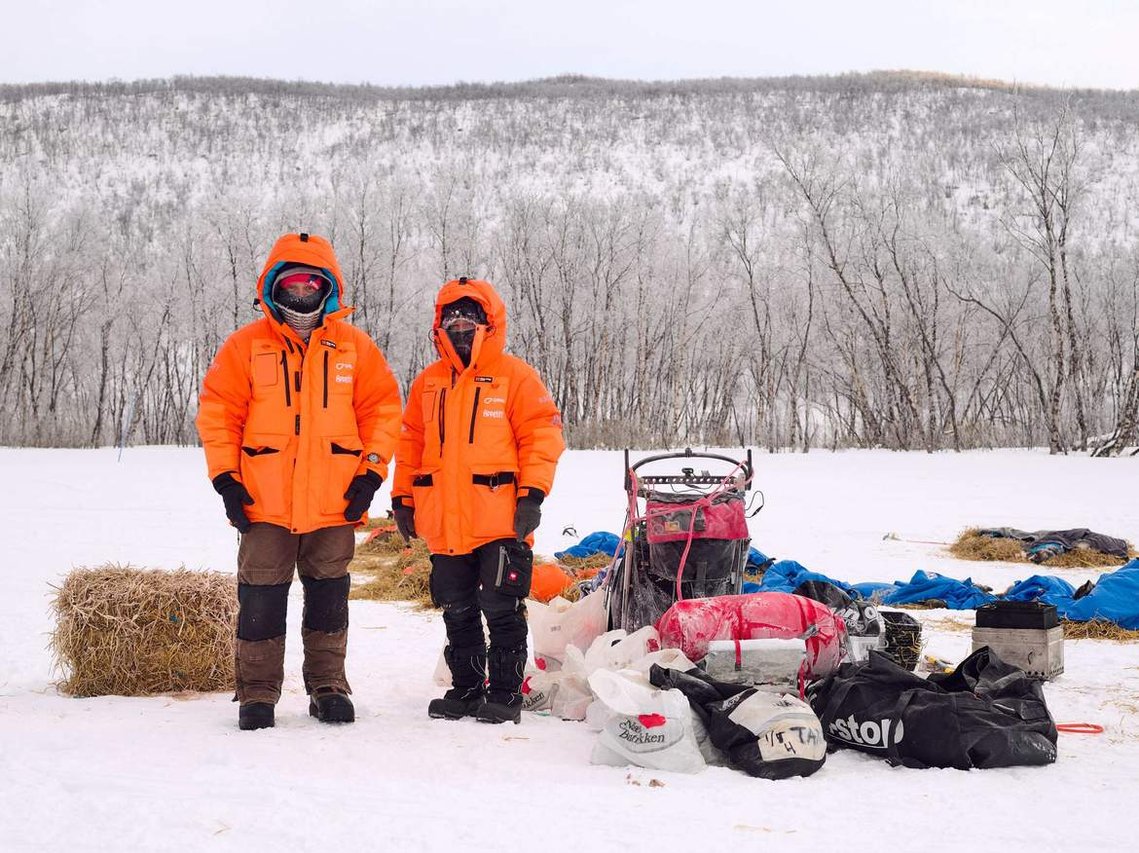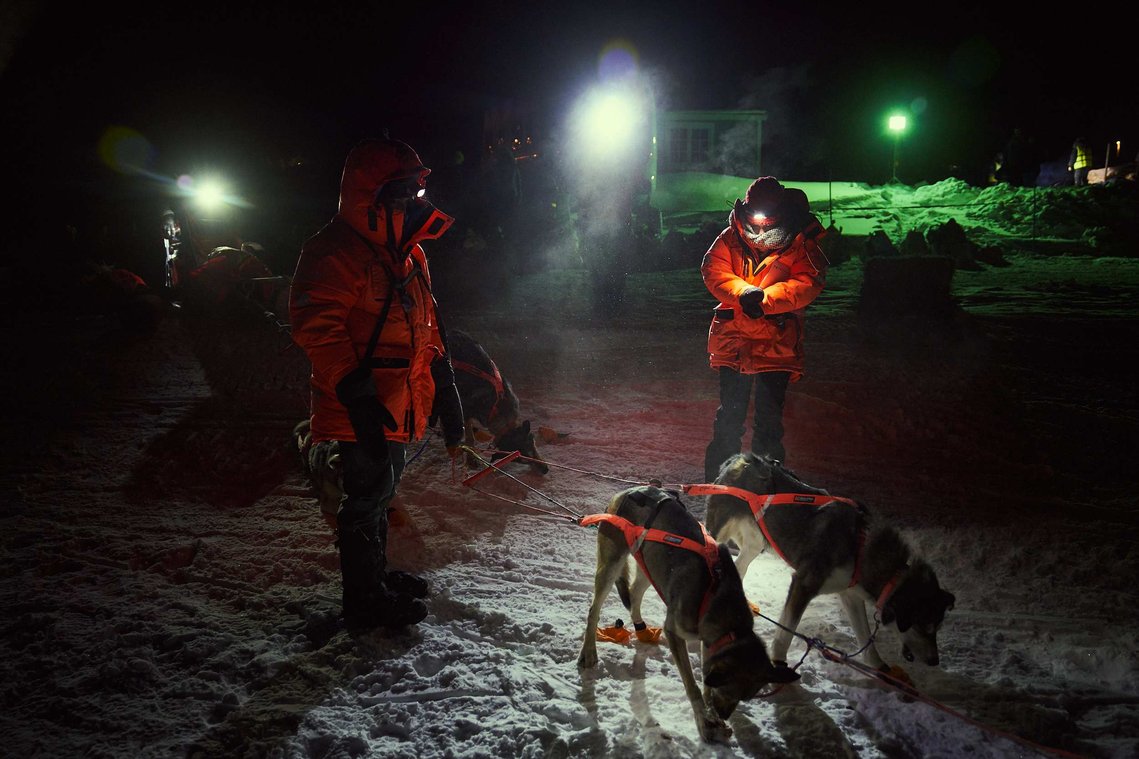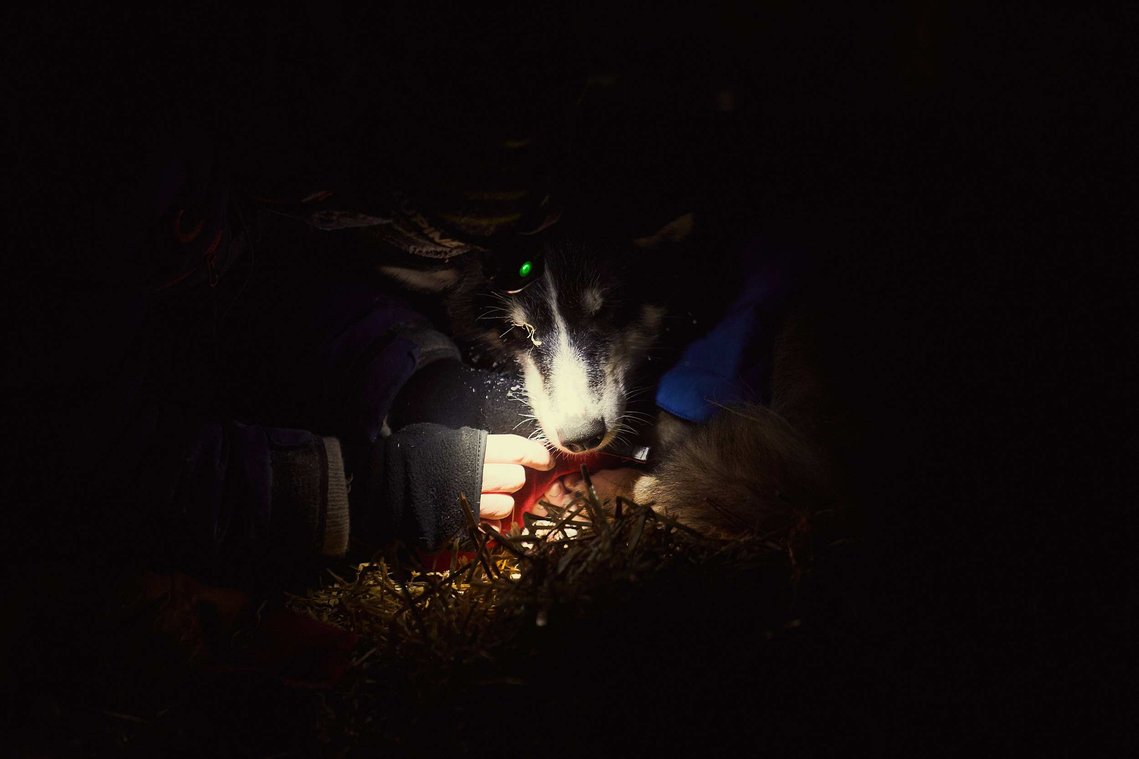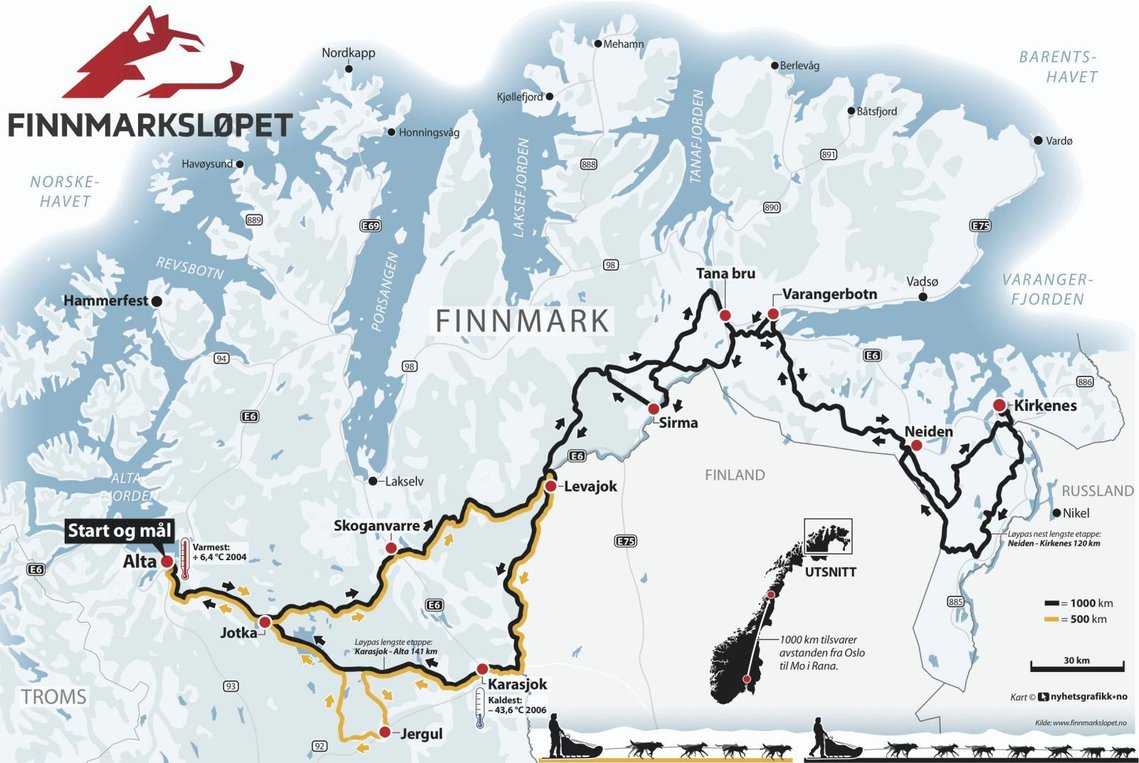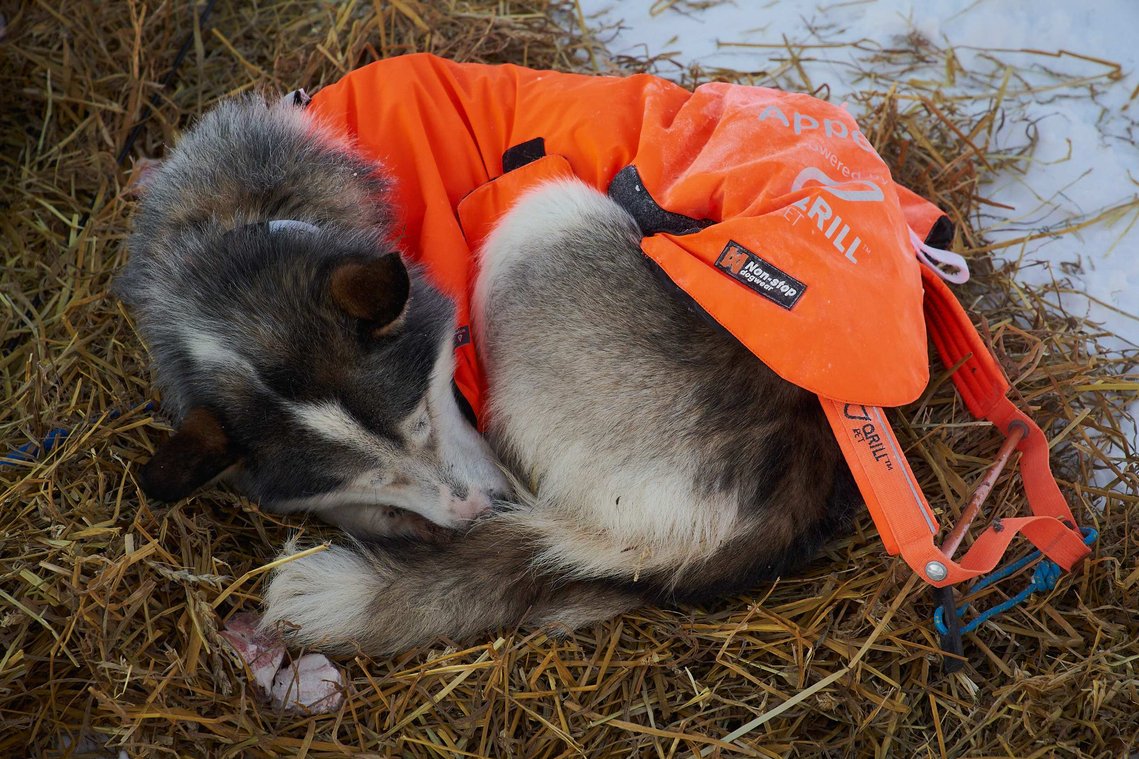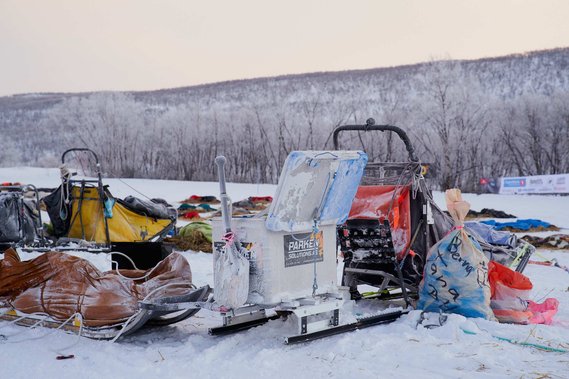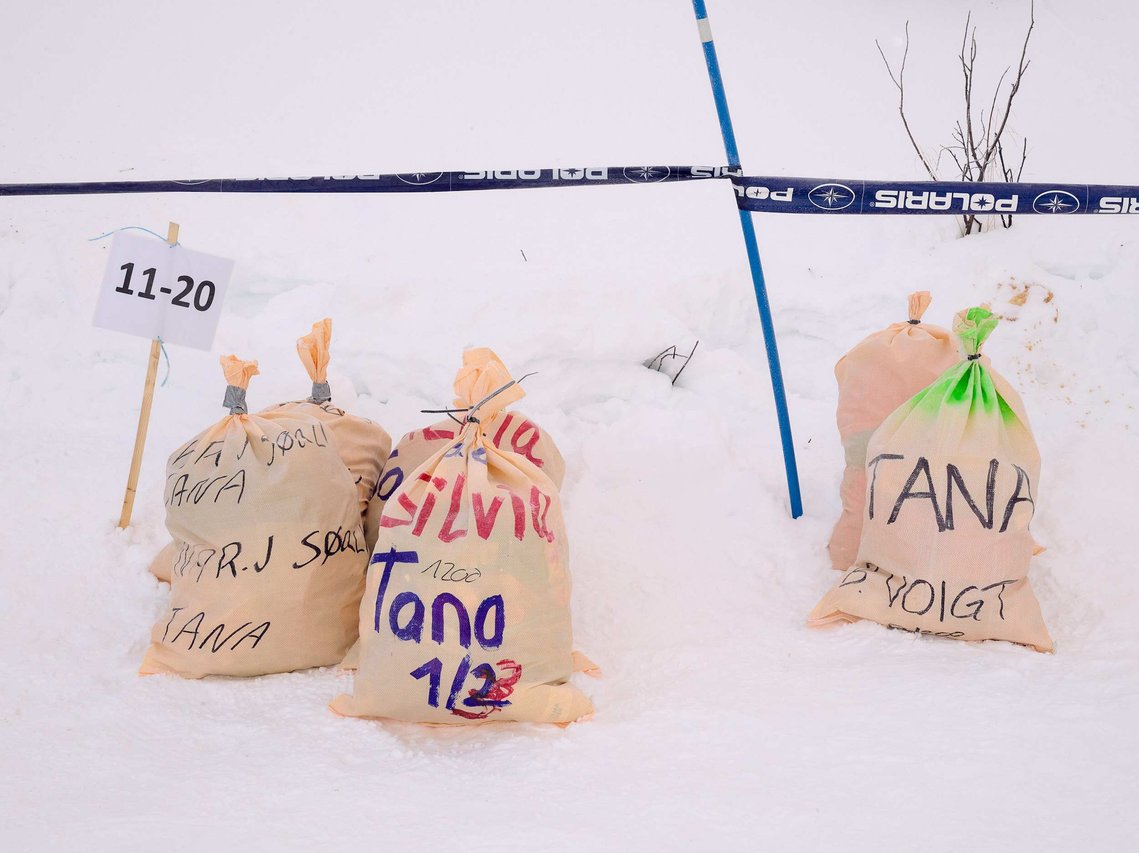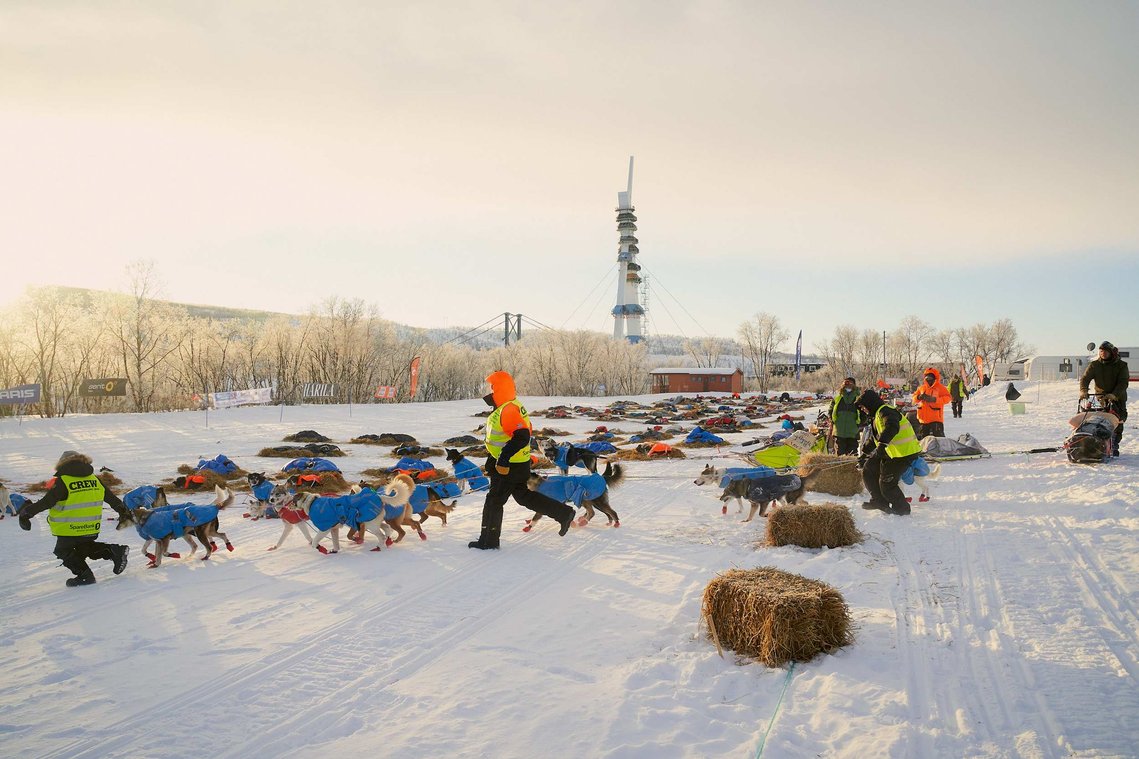Race Vets of Finnmarksløpet
Pre-dawn light is shrouded in muted winter cloud, producing a surreal red hue across a frozen field of resting dogs. Two race vets pose for me in a perfectly still -25ºc, accompanied by a solitary sound - the deadening muffle of an axe chopping lumps of icy meat. Welcome to Finnmarksløpet - the world’s northernmost dog sled race, and also Europe’s longest - crossing the Arctic plateau of Finnmark in Northern Norway for 1209km.
Whilst working with Visit Varanger I had a chance opportunity to witness one of the world’s great endurance races at close quarters, as mushers and their extraordinary canine athletes stopped at one of the race’s 12 checkpoints at Tana Bru / Deanušaldi, Norway.
Operating in temperatures cooling down to -40ºc, with trails prone to heavy snowfalls and violent winter storms en route, Finnmarksløpet (along with its North American competitor the Iditarod in Alaska) is the vector event in any serious musher’s calendar. A huge amount of mental and physical training is required, as there are no stages in Finnmarksløpet - the race goes without stopping from start to finish, barring compulsory rest breaks at the 12 checkpoints.
Although dog sledging has gained popularity in recent years (especially with the advent of the Instagram friendly husky tours in the experience economy), participating in such an ambitious race requires a completely new level of organisation, coupling strict animal welfare standards and logistical planning. The result is raw and visceral adventure - not for the faint hearted.
Spend enough time in Norway, especially in winter, and you’ll get to know a musher and end up hanging around huskies of all (very excitable) varieties. One common musher / husky owner trait is their near compulsive dedication in prioritising their dogs’ needs first. Provision of food, shelter, water and running (huskies need to run across huge distances, regularly) creates a full time job. Know a musher and you can set their daily routine around their dogs’ lives.
Finnmarksløpet is an unusual race for spectators, as most of the action is carried out in a rather outlying manner away from inhabited settlements in the wild, rugged vistas of Finnmark. To compensate - mini celebrations and race themed events pop up like a travelling circus at each one of the check points with fans staying up all night to witness the long procession of teams coming into rest (there are strict rules on how long the dogs can run for). The check points also serve as depositories for food, other dog provisions such as straw to sleep on and where each musher’s team handler can meet and assist. The handler must also have a spare dog box with space for a whole dog sled as a back up. No assistance is allowed on the trail though.
When a team enters a checkpoint, an extraordinary spectacle kicks in between race officials and the musher, perfectly choreographed to ensure that the dogs are parked up in a matter of minutes, allowing the musher to start preparing the dogs’ food (yep, that axe and lumps of icy meat) as a 25kg husky woofs through 10,000 calories a day - leaving the race vets to start their health checks for each dog in the team.
The dogs are very tired and with the straw beds laid out, time is of the essence to ensure each dog has their check and allowed to rest. During these checks, the musher will notify the vet which dog(s) they think require priority check(s) - a reflection of how in tune the whole team is after training long and hard together throughout the year. And with a typical 14 dog race team split into 4 core sections - lead dogs, swing dogs, team dogs and wheel dogs - the race vet’s knowledge of each dog’s role is also crucial.
These well rehearsed race entries go on all night and day, as the competing teams set off at staggered intervals to ensure the trails’ chock points don’t snarl up. With 2 vets working each line of dogs at a time, the process seems near endless and when operating at -25ºc or below, the critical health and welfare checks turn into a heady mix of bio-chemical science, trusted clinical experience and endurance.
Working as volunteers, the race vets take real pride in their work and I witnessed an exemplary work ethic and superb communication between the them, the dogs’ welfare needs and their musher, forging close bonds to help everyone get through the dark and bitterly cold nights.
As each nightly hour passed, more and more lines were formed and by pre-dawn’s magical illumination, the field was near full of sleeping dogs, all fed and resting in near silence.
